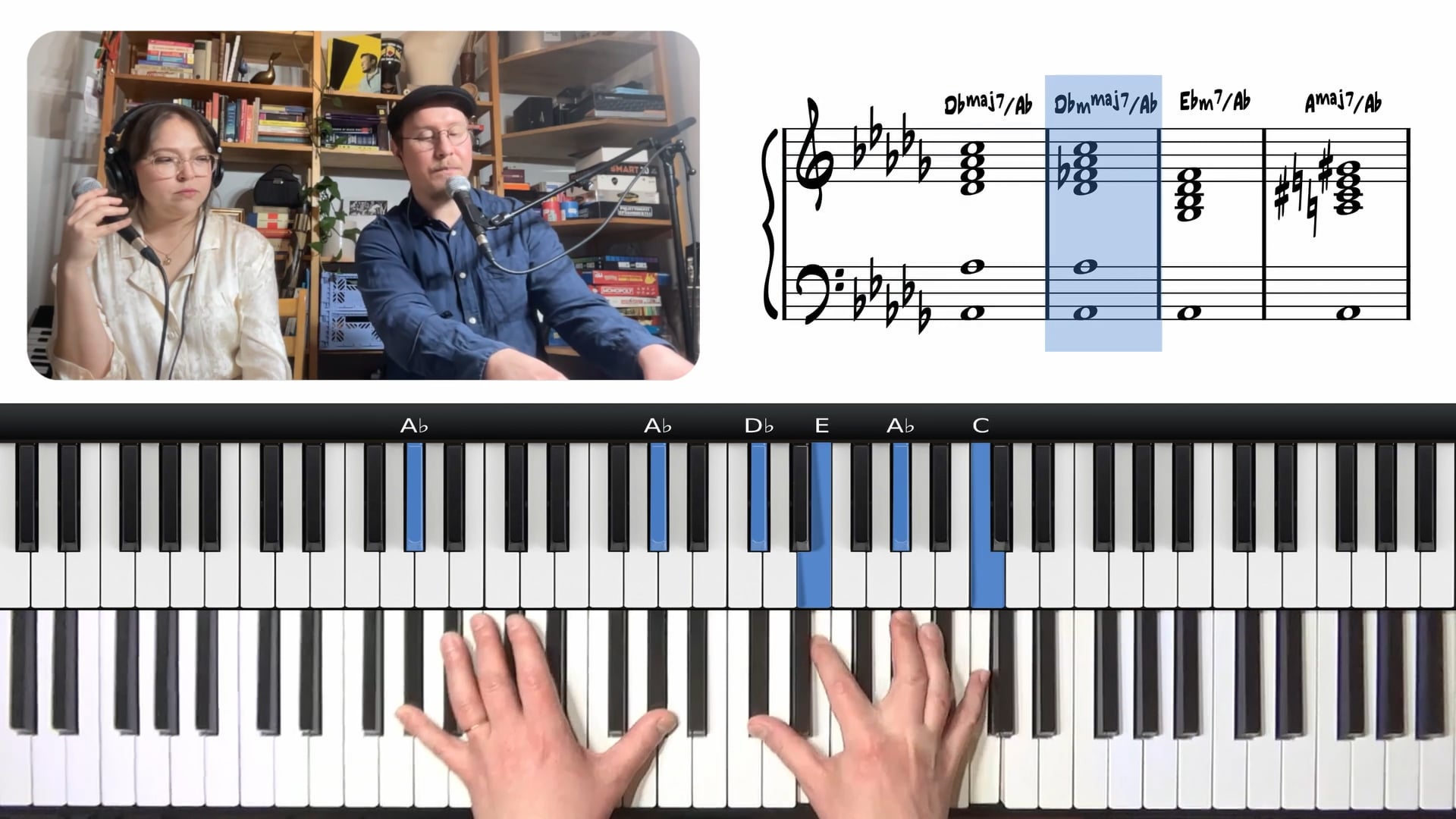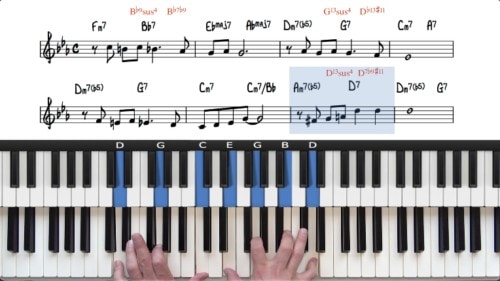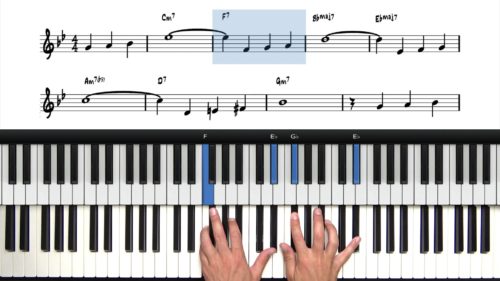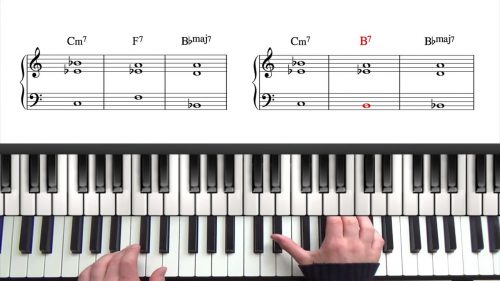Harmonic Variation & Reharmonisation
Welcome to lesson 4 in our vocal accompaniment course, where we explore the creative use of chord substitution and reharmonisation to add emotional depth and colour to your piano playing.
This lesson focuses on harmonic variations including tritone substitutions, pedal points, chord inversions, and advanced reharmonisation techniques. These tools allow you to enhance the musical conversation with your vocalist, and shape the storytelling power of a vocal duo performance.
Vocal Accompaniment & Reharmonisation
The lesson opens with a key point from the vocalist’s perspective — the importance of a "safe playground" when first learning a tune. For beginners and singers new to a song, simple and familiar harmonies build trust and confidence. However, once the song becomes more internalised, adding harmonic colour can inspire creativity and bring fresh emotional context to the performance.
It’s important to balance adventurous harmonies with musical intent. Avoid playing overly complex or dissonant chords that conflict with the melody unless this effect is desired and rehearsed. Harmonic decisions should always serve the story and emotional expression of the piece.
Understanding Reharmonisation
The term “reharmonisation” is explored critically in this lesson. Rather than seeing all harmonic changes as full reharmonisations, many variations — like tritone substitutions or inversion-based transitions — are more accurately described as colourations of existing harmonic ideas. They maintain the structure of the progression while providing new sonic flavours.
To avoid clashing with the melody, always know the melody well. Even the most sophisticated reharmonisation must support the melodic line, or at the very least, not hinder it.
Tritone Substitution: A Core Reharmonisation Tool
The tritone substitution is one of the most widely used and effective harmonic devices in jazz and are particualry effective when accompying a jazz singer. This technique replaces a dominant chord with another dominant chord a tritone (three whole steps) away.
For example:
- G7 (V7 of C) can be substituted with Db7
- C7 (V7 of F) can be substituted with Gb7
The bass motion changes, but the voice leading remains smooth, making this a particularly satisfying choice in vocal accompaniment. Used tastefully, it can add unexpected tension and resolution while still maintaining the harmonic integrity of the original tune.
Pedal Points: Creating Tension & Atmosphere
Pedal points — holding a single bass note while changing the chords above — are another powerful tool for creating harmonic interest when accompanying a vocalist. They are often used to build energy. For instance, holding an Ab in the bass during a D♭ major bridge section introduces subtle harmonic ambiguity and motion. This can significantly change the emotional tone of a section without altering the melody.
The example shows how starting with standard pedal harmonies and later shifting to more unconventional choices (e.g., using modal voicings or borrowing chords from other keys) can enhance storytelling and emotional intensity.
Chord Inversions: Simple Shifts, Profound Results
Chord inversions — where the third or fifth of the chord is in the bass instead of the root — offer subtle but effective ways to smooth out bass lines and add richness to the harmonic progression.
This lesson illustrates how even just moving through a sequence of chords with the third in the bass (e.g., C/E, F/A) can soften or sweeten the overall sound. This technique is heavily used in pop music and classical harmony and can be a tasteful addition to jazz vocal accompaniment.
Full Reharmonisation: A Creative Process
In the final section, the lesson dives into true reharmonisation — fully reimagining a harmonic structure while preserving the melody. This involves choosing a completely new starting chord, constructing a symmetrical or patterned bass line (e.g., alternating minor thirds and half steps), and fitting the chords around the melody.
This technique is useful for creating dramatic re-interpretations of a standard or arranging for larger ensembles. Though more time-consuming and requiring careful planning, it allows for a highly personal take on a tune.
In the next lesson, we’ll focus on intros and outros, exploring various strategies to confidently start and end a tune — an essential skill for every accompanist.
Practice Tips
-
Master the Melody – Always know the melody thoroughly before attempting harmonic variations or reharmonisation.
-
Start with Tritone Subs – Use tritone substitutions as a first step into harmonic variation. They are simple, effective, and widely used.
-
Experiment with Pedal Points – Try playing different chords over a static bass note to explore new emotional landscapes within a tune.
-
Use Inversions Thoughtfully – Smooth out your bass lines and add new textures by placing the 3rd or 5th of a chord in the bass.
- Compose Your Own Reharmonisation – Choose a melody, build a pattern-based bass line, and harmonise each note. This will sharpen your arranging skills and unlock new harmonic territory.







